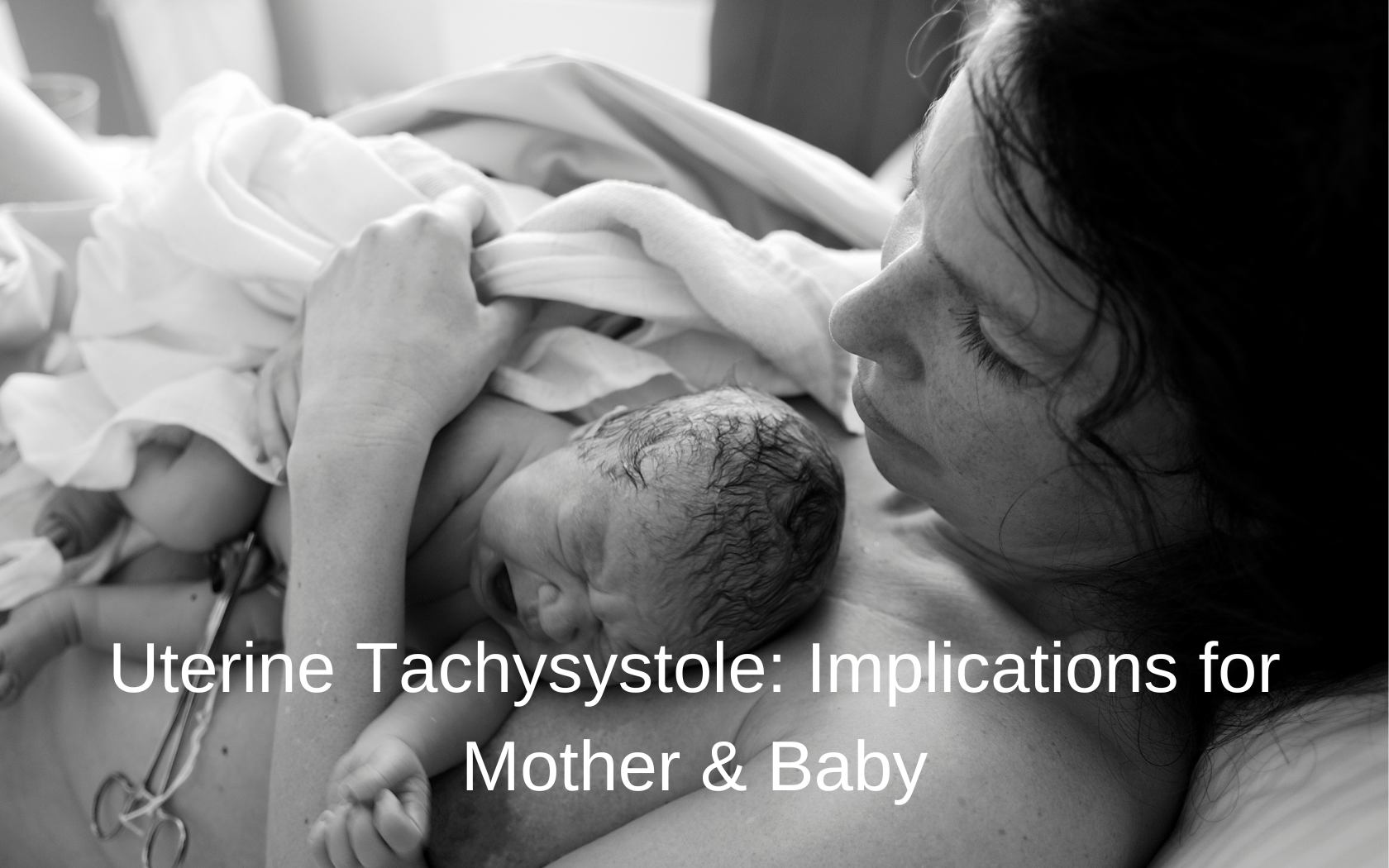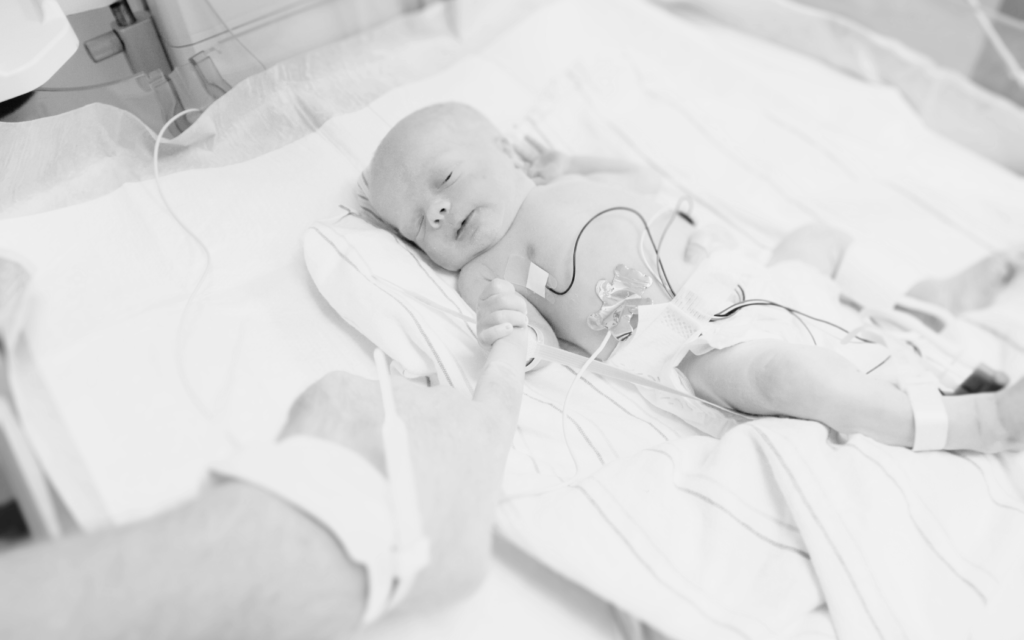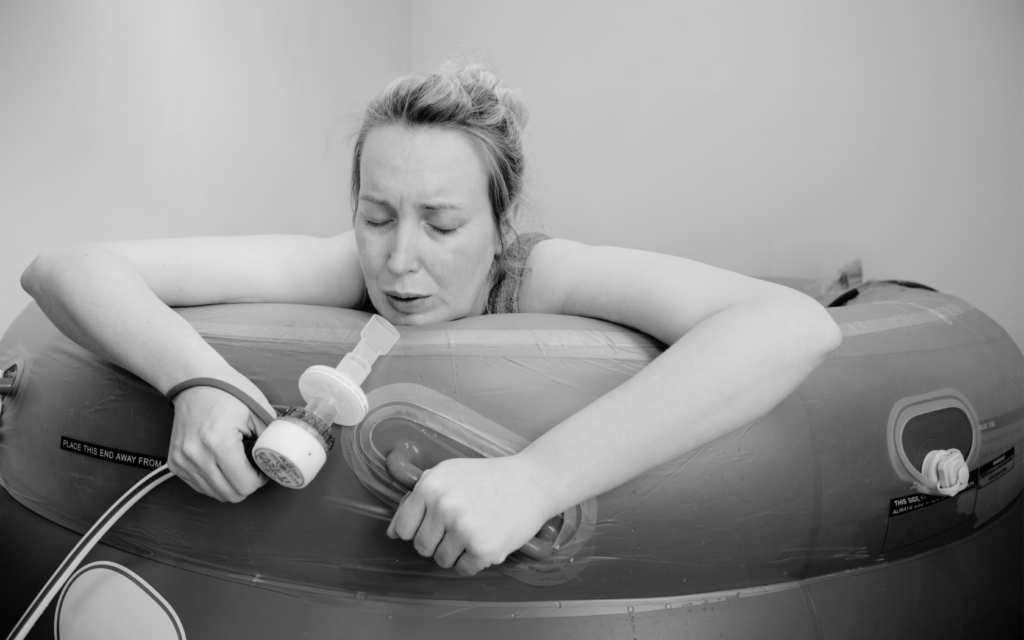Most mothers who’ve gone through labor want it to be over pronto! But it’s harmful for contractions to come on too fast and too strong. When that happens, the woman might be suffering from uterine tachysystole–and suffering’s a good word for it.
With this condition, contractions can be very painful and long. There may be little time to recover between them. Uterine tachysystole can affect the baby’s oxygen levels and lead to serious complications. And while it’s not always dangerous, in some cases tachysystole does lead to injuries for the mother, baby, or both.

What is Uterine Tachysystole?
Uterine tachysystole is the medical term for when a woman has excessive uterine activity during labor, characterized by excessive contractions. The meaning of “excessive’ can vary a bit. But in general, it’s when a woman experiences more than five contractions in a 10-minute period, averaged over a 30-minute window. These contractions can be too frequent or too intense, which may lead to complications.
It is crucial to monitor clinically relevant outcomes in cases of uterine tachysystole to ensure the well-being and safety of both the mother and the baby.
What Causes Uterine Tachysystole?
Uterine tachysystole can be caused by various factors, including:
- Using labor-inducing medications such as oxytocin (Pitocin), prostaglandins, or misoprostol.
- Certain maternal conditions, like dehydration and uterine fibroids.
- Fetal distress. When the fetus is in distress, it may release stress hormones that can stimulate uterine contractions.
- The fetus is in an abnormal position, such as occiput posterior (back-to-back)
Certain risk factors can make tachysystole more likely to happen. For example, having preeclampsia or uterine fibroids might predispose women to uterine tachysystole.
An incorrect dosage of labor-inducing medications or an adverse reaction to them is one of the most common causes of tachysystole. Research has shown that Pitocin in particular causes worrisome adverse effects. So doctors should be cautious when using it to induce labor.

Can Uterine Tachysystole Cause Fetal Distress & Harm the Baby?
Tachysystole isn’t a medical emergency by itself. But it can be harmful to the baby, especially if the medical team mismanages it.
It’s normal for a baby to receive a bit less oxygen during labor. Every time the uterus contracts, the blood supply to the placenta is diminished for a moment, affecting the baby’s oxygen levels. But then the contraction stops, and things go back to normal.
But contractions that last too long, are too frequent or are too strong can be dangerous. They can compromise the baby’s oxygen supply and reduce maternal blood flow to the placenta, leading to fetal distress and serious complications, such as the following:
- Hypoxic-ischemic encephalopathy (HIE)
- Cerebral Palsy
- Seizure disorders
- Meconium aspiration syndrome (when a baby breathes in the first stool while in the womb)
- Fetal acidosis: Insufficient oxygen supply to the baby can cause a buildup of acids in the blood. This might harm the baby’s organs.
- Stillbirth (in severe cases)
- Placental abruption
- Intracranial hemorrhage
Uterine tachysystole can also lead to a decrease in fetal oxygen saturation and fetal intracerebral oxygen saturation, which are critical for the baby’s well-being.
A progressive decrease in fetal oxygen levels due to excessive contractions can result in severe complications.
Can Uterine Tachysystole Injure the Mother?
Normal contractions are painful and tiring enough. So is it any wonder that uterine tachysystole causes extreme exhaustion for a mother? This can make labor more challenging, opening the door for potential complications.
Uterine tachysystole also may increase the risk of postpartum hemorrhage (excessive bleeding after childbirth). This happens because the uterus gets overstimulated. It can’t contract effectively to prevent bleeding.
On rare occasions, uterine tachysystole causes uterine rupture. That’s a dangerous condition where the uterus tears. It can cause severe pain and bleeding. Women with a history of uterine surgery are most susceptible to it.

How Doctors Handle Tachysystole
Management of uterine tachysystole can involve the following:
- Monitoring mother and baby
- Putting the mother in the left lateral position
- Giving the mother oxygen
- Adjusting medication dosages
- Providing hydration
- Stopping medication administration
- Performing an emergency cesarean section (if fetal distress persists.)
- In severe cases, admission to the neonatal intensive care unit may be required.
With tachysystole, the situation can take a sudden turn for the worse. So doctors need to take action as soon as the woman shows signs of excessive contractions. Failing to do so can result in serious birth injuries. It can also lead to serious injury for the mother, as is the case with uterine rupture.
Stopping medication administration is crucial as uterine tachysystole can reduce placental blood flow, leading to decreased fetal oxygenation. This reduction in placental blood flow can increase the risk of fetal acidosis and other complications.
In severe cases, mishandling of uterine tachysystole may necessitate interventions such as forceps or vacuum extraction. Using those tools increases the risk of birth injuries such as cephalohematoma, brachial plexus injuries, or skull fractures.
If you or your baby suffered injuries because your doctors mishandled uterine tachysystole, don’t hesitate to call us. You may be eligible to file a birth injury lawsuit.
Contact us here and tell us about your injury. We offer free consultations to help you understand your legal options. If you have a case, we’ll help you seek the compensation you deserve.




